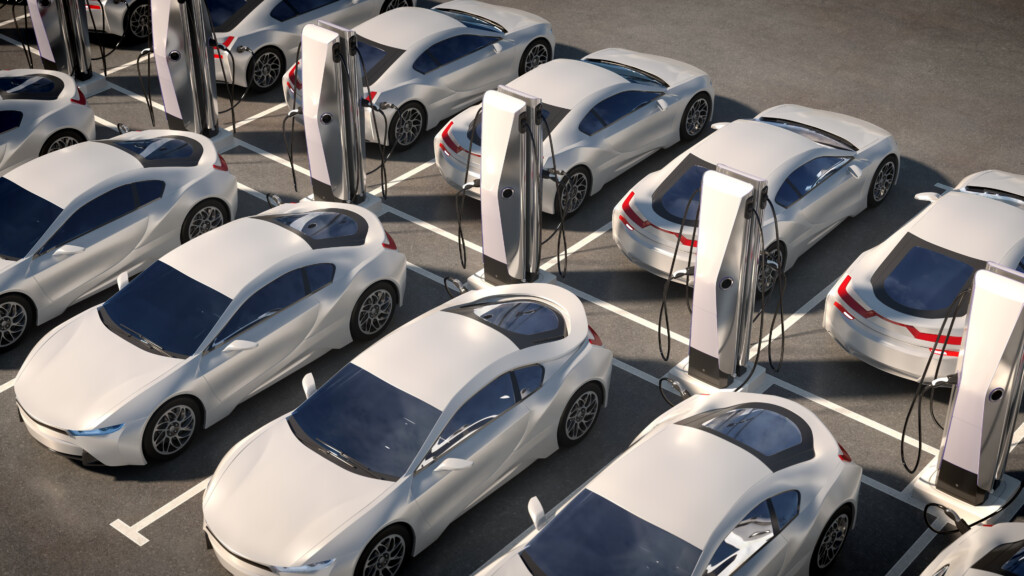Why the EV Charger Market Requires Strong IoT Solutions

EV charging infrastructure is a high-growth market segment. This is, in part, due to considerable legislative support around the world. The UK government, for example, is committed to stopping the sale of new petrol and diesel vehicles by 2030 and ensuring that all new cars and vans sold within the United Kingdom are zero-emission vehicles by 2035. Though, as of October 2022, there are an estimated 870,000 electric vehicles on the UK’s roadways, new EV registrations currently represent just under 20% of new cars sold. To support the switch to electric vehicles at the rate needed to meet those dates, there must be a massive investment in charging infrastructure.
Unfortunately, we’re just not going fast enough yet.
According to data from the Ministry of Transport and Society of Motor Manufacturers and Traders (SMMT), there are around 330,000 home chargers currently deployed in the UK, 32,000 chargers at workplaces, and about the same number of public charging stations. The SMMT predicts that 300,000 public chargers will be needed by 2030 – a roughly 10x increase from current figures. Using that predicted growth of EV charger adoption, as well as that of new EV sales, we can expect there to be between 4-6 million chargers on the road by 2030. That’s a lot of new devices to be deployed to the field, and quickly!
Breaking Down the EV Charger Business
When we look at the EV charger business, there are three major roles.
- Charge point operators sit at the centre of the business, buying energy from the Grid Operator and selling it to EV Owners.
- Grid operators supply the raw energy to the charger operator and focus on their infrastructure to meet the power delivery needs of the charger installation.
- EV owners are the paying customer and the main source of revenue for the EV charge point operator.
Many companies are building new services and applications around charge point operators. These include applications like charge session subscriptions for EV owners, billing and authorisation services to support and collaborate between charge point operators, mapping and reservation solutions, and more.
New innovations in bi-directional chargers and battery storage specifications are even creating business models around EV as a power bank – delivering power back into the grid when it is required and topping the batteries back up when the grid is quieter.

4 Ways IoT Supports a Successful EV Charger Business
Underpinning these business models is a successful IoT deployment of EV chargers. Charge point operators need to focus on 4 key goals to ensure success:
- Installation and Commissioning of the Charger
We consistently hear that cellular is the IoT connectivity solution of choice for EV chargers, partly because of the secure and reliable connections commonly found in many areas and partly because of its existing infrastructure. Utilising an infrastructure that they don’t have to configure, maintain, or include in their regular operations allows engineers installing chargers to focus on the physical mounting and electrical hook-up requirements, confident in the ability of cellular coverage to provide the internet connection without having to spend time configuring and debugging a connection via the customer’s home broadband.
While most chargers will typically include wifi and ethernet connectivity options, these technologies are best utilised as a fallback should the location survey show poor cellular coverage at the installation point and leave no choice but to rely on a broadband connection to the site.
- Ongoing Daily Monitoring
Ongoing real-time monitoring of charge points is vital to an operator’s business. Any outages will directly impact their billable service, so operators need to know if and when an issue affects their network or equipment in real time. Some solutions even offer tools that are able to diagnose and remedy any issues that might arise remotely. In the event that on-site maintenance is required, monitoring provides valuable intel that allows operators to send a site engineer to repair the devices with the correct parts in case of a component failure.
Critical to this level of monitoring is a stable internet connection. When charge point operators can rely on their cellular connectivity provider, they can offer a self-contained solution and benefit from a lower total cost of ownership for their fleet of connected chargers rather than running a separate network monitoring and maintenance team. If on-the-ground broadband connectivity monitoring and debugging are included for every installed charger, the total cost of ownership for the fleet of chargers skyrockets.
- Integration Enablement
Integrations are opening up a whole ecosystem around EV charging. We’ve talked to teams building battery store proofs-of-concept where EVs can be used to buffer energy from solar installations while owners are out of the country, as well as billing and payment services that the operators can use for their backend systems.
All of these integrations rely on consistent, reliable data, secure APIs, and system connections, all of which elevate EV chargers from simple electrical devices to IoT units with appropriate backend systems.
- High-Quality Customer Experience
Finally, we have the customer experience aspect, which will likely grow in importance as this market matures. At the moment, EV owners are just happy to be able to find a charger and top their cars off before they run dry – but as the number and availability of chargers grows (and EV ownership and usage widens), customer experience is going to become more important as a differentiator from other EV charge operators. It will be a key deciding factor, particularly as EV owners compare all of the tariffs, packages, and offers that operators will make. Once again, the features and integrations that charge point operators can offer customers will be powered by the connection and the data collected from IoT devices.
As we’ve previously touched upon, The UK government has recently introduced the EV Smart Charge Point Regulations to support the transition to EVs from the residential and non-public charging perspective. Because the regulations require all new domestic EV chargers to be connected to the internet, charge point operators are looking past basic data reporting functions to build better offerings and open up their business models to be more client-facing. These improvements are rooted in data collected from their connected devices, so they must carefully manage their chargers, data, and IoT infrastructure to be successful.

Take Charge of Your EV Charger Deployment
We are here to help you understand how new regulations will affect your deployment and ensure your EV charging business has reliable, secure connectivity. For more information on IoT in EV charging from experts working in the industry, check out our EV charging hub. There, you can learn how to accelerate IoT deployments, reduce risk, and launch successful, scalable IoT rollouts.
Of course, if you’d rather speak with us in person, you could always reach out here. Click the link to schedule a call and find out how Soracom can solve your IoT deployment pain points.
………………
Got a question for Soracom? Whether you’re an existing customer, interested in learning more about our product and services, or want to learn about our Partner program – we’d love to hear from you!



